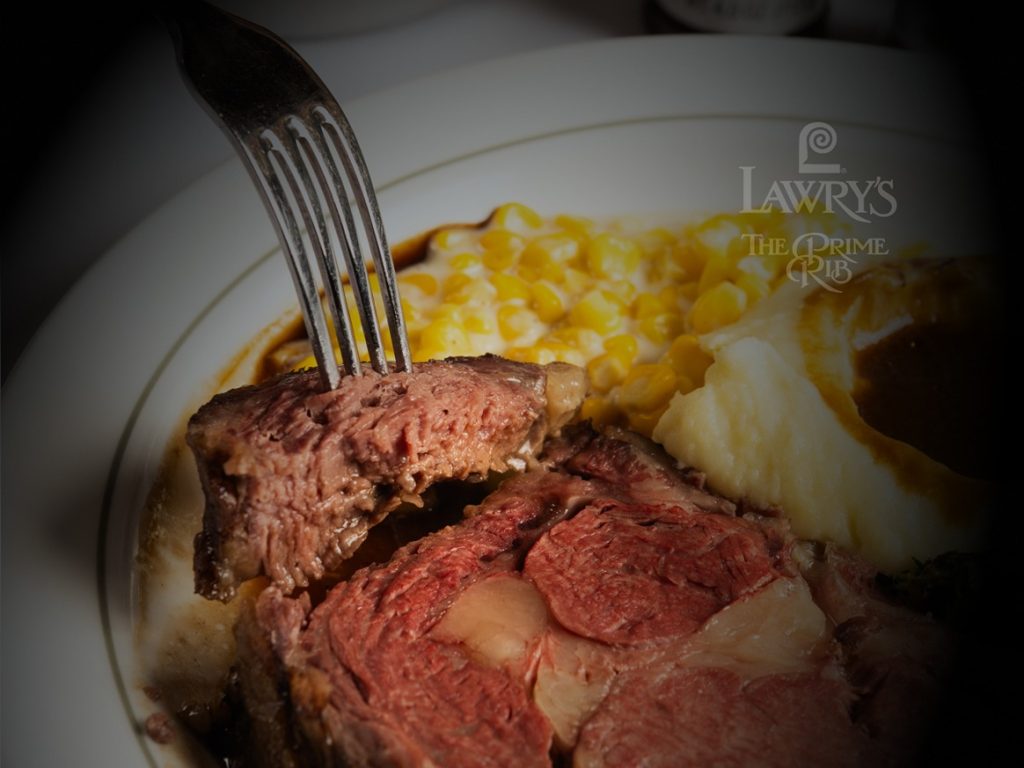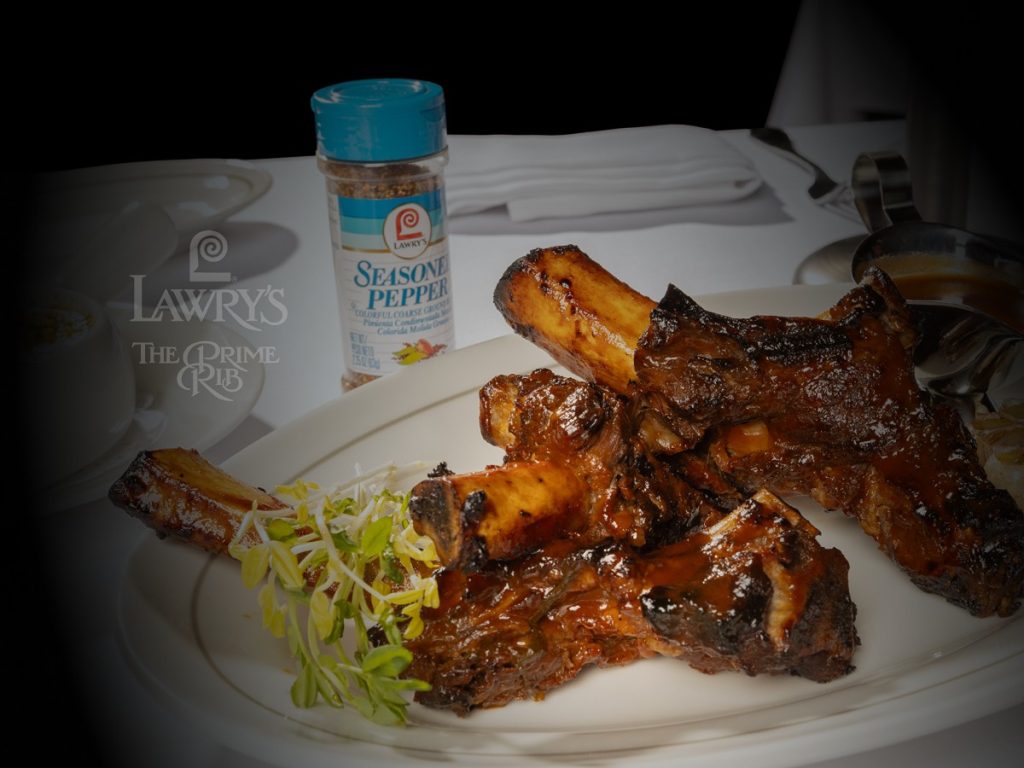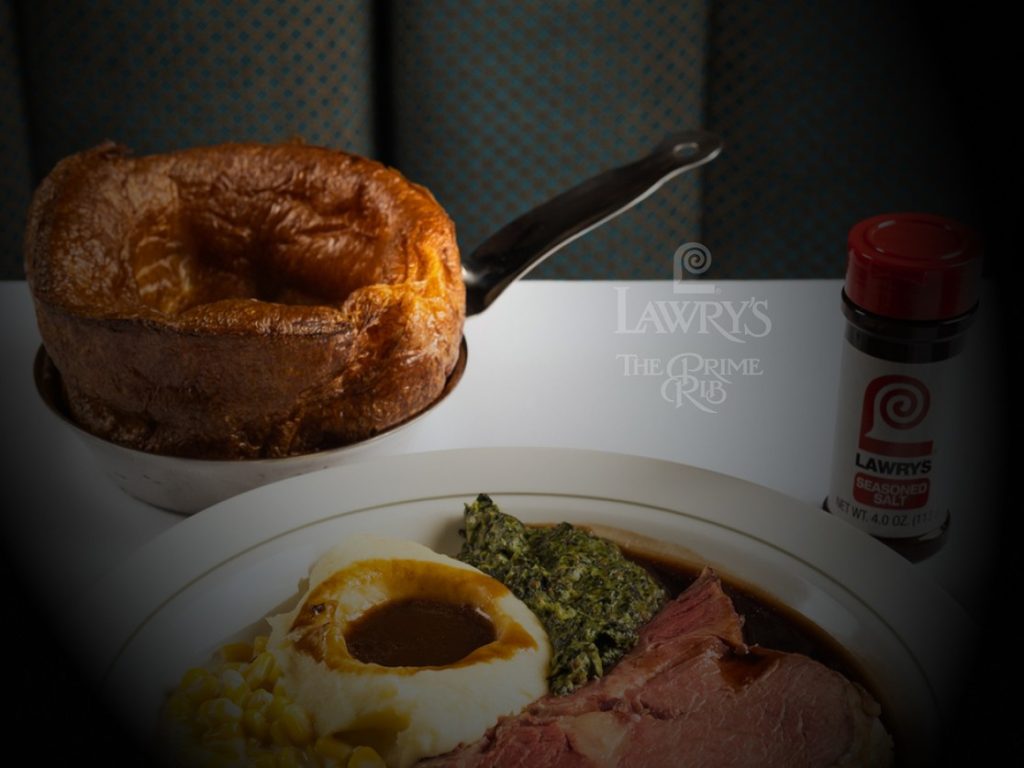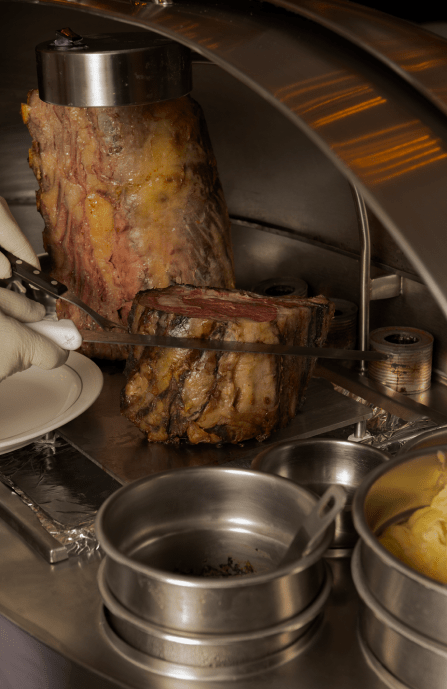Reverse Seared Steak: The Complete Guide to Perfect Juiciness and Crust
There is a reason serious cooks talk about reverse seared steak the way watch collectors talk about movements and vintages. Once you understand what is happening in the pan and in the oven, you realise it is less about trend and more about precision.
Reverse searing is a two stage method that turns a thick cut steak into something evenly rosy from edge to edge with a crisp mahogany crust that snaps under the knife. The process starts low and ends blazing hot. Instead of searing first and finishing in the oven, you flip the order.
You gently bring the steak up to temperature in a low oven or on the cool side of the grill, then you finish it with a hard sear in a ripping hot skillet or over high direct heat. That order of operations is everything
Table of Contents
ToggleHere is how to do it properly at home.
First, you start with a thick cut steak, no less than one and a half inches and preferably closer to two inches. Ribeye, New York strip, porterhouse, T bone, or filet mignon all work beautifully because they carry enough internal marbling to stay supple. Generously season the steak with salt and black pepper on all sides. For an even deeper crust later, you can leave it uncovered on a wire rack set over a tray in the refrigerator overnight. That step dries the surface and concentrates flavour while the interior stays protected.
When you are ready to cook, heat the oven to around 120 to 135°C, set the steak on that rack over the tray, and slide it in. You are not blasting it. You are letting gentle heat slowly raise the internal temperature. This even rise matters because muscle fibres tense less aggressively at low heat, and the steak cooks more uniformly instead of going grey and dry at the edges while staying underdone in the centre.
Cook until the internal temperature is about 6 to 8°C below where you want to finish. For rare, you are pulling around 40°C. Then, for medium rare, aim for 46°C. For medium, around 52°C. Use an instant read thermometer, not guesswork. Size, fat content, and oven behaviour all affect timing, so temperature is the only truth. As the steak warms in the oven, two important things happen.
First, the enzymes that live naturally in beef are active in this gentle range and begin breaking down some of the tougher proteins, which subtly tenderises the meat. Second, the surface slowly dries. That dry exterior is not a flaw. It is the foundation of your crust.
Once the steak is sitting in that pre sear zone, take it out and let it rest briefly while you heat a heavy pan over high heat. Cast iron is ideal because it holds heat and delivers it fast. When the pan is smoking hot, add a small amount of high smoke point oil, then lay in the steak. Now you are in the sear. You are not cooking the steak through here. You are developing the crust through the Maillard reaction, that deep browning that creates nutty, roasted, beef forward notes.
Sear one to two minutes per side. Tilt the steak on its edges to render and brown the fat cap. Drop the heat to medium low, add a knob of butter, and baste. At this stage you can spoon in smashed garlic cloves, thyme, or rosemary and wash the meat with the aromatic butter for about two minutes. The final internal temperature should sit at about 49 to 54°C for medium rare after carryover. The steak is ready to slice and serve almost immediately because the slow initial cook already relaxed the juices.
Now, how is this different from the classic sear first method?
The traditional steakhouse logic says you start in a blazing pan to “lock in juices,” then move the pan to the oven to coast to doneness. We now know searing does not lock in anything. It only browns the outside.
The reality is that blasting a cold steak in high heat at the start creates a thick overcooked ring before the centre even reaches medium rare. You get a red core, then a band of pink, then a wide halo of grey. Reverse searing solves that. Because the low oven step gently warms the steak all the way through before searing, you get an almost uniform blush from edge to centre with barely any grey. You also get more control.
The low heat stage gives you a much bigger window to hit the temperature you actually want, instead of gambling on a sixty second “pull it now or ruin it” moment. The downside. Reverse searing takes longer and it is not suited to thin steaks. Anything thinner than one and a half inches will overshoot in the oven before you ever hit the pan.
In that case the classic high heat sear is still practical. If you are cooking a thinner strip for a Tuesday dinner and you simply want fast, pan sear first and finish in the oven. If you are cooking a thick ribeye or a celebratory porterhouse and you care about edge to edge medium rare and a crust that behaves like bark on prime rib, reverse sear is not negotiable. It is the move
Of course, you can master technique at home, thermometer in one hand and cast iron in the other, or you can experience what that level of control tastes like when it is executed by people who do it night after night in a true steakhouse environment.
For a prime rib carved to order, steak cooked to its ideal temperature, service polished to a shine, and an atmosphere that defines fine dining Jakarta, make your way to Lawry’s The Prime Rib Jakarta.
Explore Lawry’s menu and see why a slow roasted prime rib and expertly seared steaks remain the benchmark. To plan an evening worthy of the cut, you can book your seat here or learn more about how Lawry’s converge where classic technique with indulgence.
Steak Reverse Sear: Panduan Lengkap untuk Hasil Daging Juicy dengan Crust Sempurna
Tidak heran kalau banyak koki profesional menganggap teknik reverse sear sebagai rahasia utama untuk menghasilkan steak sempurna. Kalau Anda paham cara kerja panas di wajan dan oven, Anda akan tahu bahwa metode ini bukan sekadar gaya baru memasak, melainkan cara paling pas untuk mendapatkan daging matang merata dan juicy di setiap potongannya.
Reverse sear adalah metode dua tahap yang mengubah potongan steak tebal menjadi daging matang merata dari pinggir hingga tengah, dengan lapisan luar berwarna mahoni yang renyah dan menggugah selera. Prosesnya dimulai dengan suhu rendah lalu diakhiri dengan panas tinggi. Alih-alih memanggang dulu lalu memanggang di oven seperti biasa, urutannya dibalik. Steak dipanaskan perlahan di oven bersuhu rendah atau di sisi panggangan yang lebih dingin, kemudian diselesaikan dengan sear cepat di wajan panas atau di atas api langsung. Urutan ini adalah kuncinya.
Berikut cara melakukannya di rumah:
Pertama, pilih potongan steak yang cukup tebal—minimal 1,5 inci, idealnya mendekati 2 inci. Ribeye, New York strip, porterhouse, T-bone, atau filet mignon semuanya cocok karena punya marbling cukup untuk menjaga kelembutan daging. Bumbui steak dengan garam dan lada hitam di semua sisi. Untuk hasil kerak yang lebih dalam, Anda bisa membiarkan steak tanpa penutup di atas rak kawat di dalam kulkas semalaman. Langkah ini membantu mengeringkan permukaan dan memusatkan rasa tanpa membuat bagian dalam kering.
Saat siap dimasak, panaskan oven di suhu 120–135°C, letakkan steak di rak di atas loyang, lalu masukkan. Tujuannya bukan untuk memanggang dengan panas tinggi, melainkan membiarkan panas lembut perlahan menaikkan suhu bagian dalam daging. Kenaikan suhu yang perlahan ini penting karena serat otot jadi tidak mudah menegang, membuat steak matang merata tanpa bagian luar yang kering atau bagian tengah yang masih mentah.
Masak sampai suhu internal steak sekitar 6–8°C di bawah suhu akhir yang Anda inginkan. Untuk rare sekitar 40°C, medium rare 46°C, dan medium 52°C. Gunakan termometer daging agar hasilnya akurat, karena ukuran steak, kadar lemak, dan performa oven bisa berbeda-beda. Saat steak dipanaskan perlahan di oven, dua hal penting terjadi:
Pertama, enzim alami dalam daging sapi mulai bekerja memecah protein keras, membuat tekstur daging lebih empuk. Kedua, permukaan steak perlahan mengering, dan ini justru bagus karena menjadi dasar untuk membentuk kerak sempurna nanti.
Setelah steak mencapai suhu pra-sear, keluarkan dan biarkan istirahat sebentar sambil Anda memanaskan wajan berat di atas api besar. Wajan besi cor sangat ideal karena bisa menahan panas tinggi dan menyebarkannya merata. Saat wajan sudah benar-benar panas dan mulai berasap, tambahkan sedikit minyak dengan titik asap tinggi, lalu masukkan steak. Di sinilah proses sear dimulai. Tujuannya bukan untuk mematangkan daging sepenuhnya, melainkan untuk membentuk kerak lewat reaksi Maillard, proses pencokelatan yang menghasilkan aroma panggang khas dan rasa daging yang lebih kaya.
Sear masing-masing sisi selama satu hingga dua menit. Miringkan steak untuk mencairkan dan mencokelatkan bagian lemaknya. Turunkan panas ke sedang-rendah, tambahkan sepotong mentega, lalu siramkan mentega cair ke daging. Di tahap ini, Anda bisa menambahkan bawang putih geprek, thyme, atau rosemary untuk aroma tambahan. Lanjutkan menyiram selama sekitar dua menit. Setelah itu, suhu internal ideal untuk medium rare biasanya mencapai 49–54°C. Karena proses pemasakan awalnya sudah lambat, steak bisa langsung dipotong dan disajikan tanpa harus menunggu lama.
Lalu, apa bedanya dengan metode klasik yang sear dulu baru oven?
Biasanya, logika steakhouse tradisional mengatakan bahwa sear di awal berfungsi untuk “mengunci jus”, lalu dilanjutkan ke oven. Tapi sekarang kita tahu, searing tidak mengunci apa pun—ia hanya memberi warna cokelat di luar.
Masalahnya, jika steak yang masih dingin langsung dimasak di panas tinggi, bagian luar akan cepat matang bahkan gosong sebelum bagian tengah mencapai medium rare. Hasilnya: tengahnya merah, lalu lapisan merah muda, dan tepi berwarna abu-abu. Reverse sear menghindari hal ini. Karena tahap oven dilakukan lebih dulu dengan panas rendah, steak bisa matang perlahan dan merata dari luar ke dalam sebelum disear, menghasilkan warna merah muda sempurna dari tepi ke tengah dengan sedikit sekali bagian abu-abu. Selain itu, Anda punya kendali lebih baik atas hasil akhir.
Tahap pemanasan rendah memberi waktu lebih longgar untuk mencapai suhu ideal tanpa panik harus “angkat sekarang atau gosong.” Kekurangannya, metode ini memang butuh waktu lebih lama dan tidak cocok untuk steak tipis. Potongan di bawah 1,5 inci biasanya akan terlalu matang di oven sebelum disear.
Kalau begitu, metode klasik tetap bisa digunakan untuk steak tipis atau saat ingin masak cepat. Misalnya untuk makan malam sederhana, cukup sear di wajan lalu selesaikan di oven. Tapi kalau Anda memasak ribeye tebal atau porterhouse untuk momen spesial dan menginginkan hasil medium rare merata dengan kerak sempurna seperti prime rib, reverse sear adalah cara terbaik.
Anda bisa mempraktikkannya di rumah—termometer di satu tangan, wajan besi di tangan lain—atau Anda bisa langsung merasakan hasil terbaiknya di tempat yang memang ahli dalam hal ini. Untuk prime rib yang diukir sesuai pesanan, steak yang dimasak pada suhu ideal, pelayanan kelas atas, dan suasana fine dining Jakarta yang elegan, kunjungi Lawry’s The Prime Rib Jakarta.
Lihat pilihan menu mereka di Lawry’s menu dan temukan kenapa prime rib panggang lambat dan steak sear sempurna tetap jadi standar kenikmatan sejati. Untuk merencanakan makan malam istimewa, book your seat dan rasakan sendiri bagaimana Lawry’s memadukan teknik klasik dengan kemewahan yang tak tergantikan.
FAQ
Reverse searing is a two-stage method where a thick cut steak is first gently brought up to temperature in a low oven or on the cool side of a grill, then finished with a hard sear in a hot skillet or over high direct heat. This technique ensures an evenly rosy interior with a crisp, mahogany crust.
The reverse sear method provides greater control and ensures that the steak is evenly cooked from edge to edge with minimal grey overcooked areas, unlike the traditional method which can result in an overcooked ring before the center reaches the desired doneness.
Thick cuts such as ribeye, New York strip, porterhouse, T-bone, and filet mignon are ideal for reverse searing because they have enough internal marbling to remain tender and juicy throughout the process.
After gently warming the steak in the oven, it is seared in a smoking hot cast iron pan with a small amount of high smoke point oil, creating a deep crust through the Maillard reaction. Finishing with butter, garlic, and herbs can enhance the flavor.
For rare, aim to pull the steak at an internal temperature of about 40°C; for medium rare, 46°C; and for medium, around 52°C before the final sear. The steak will rise a few degrees due to carryover cooking.
Reserve Table
Lawry’s Restaurants is the perfect place to begin your venue search for any occasion.
Related Blog
Based on What You Read

Sirloin or Rib Eye Steak?

Grilled Steak vs Pan-Seared: What’s the Difference & Which Tastes Better

